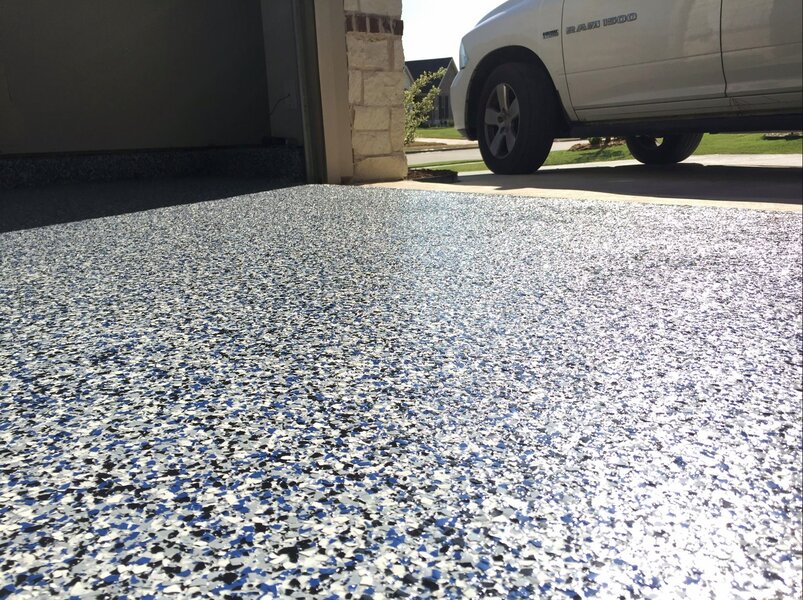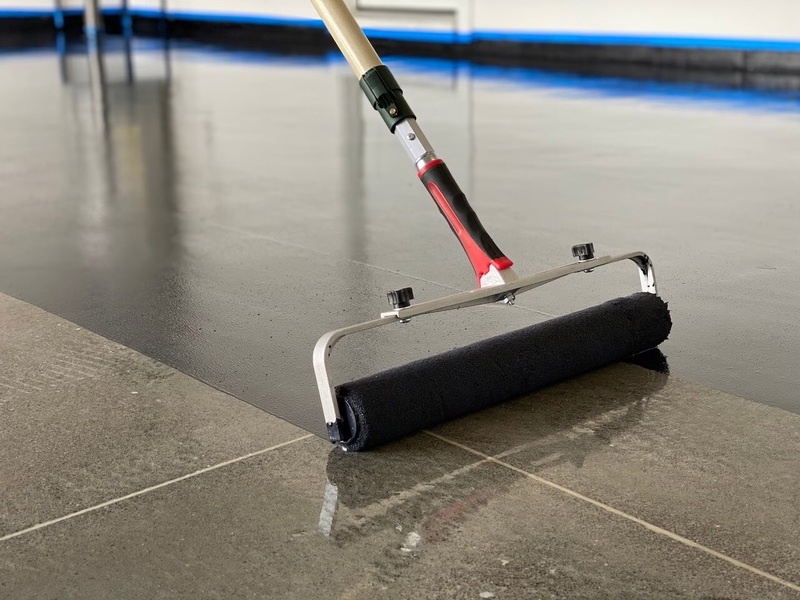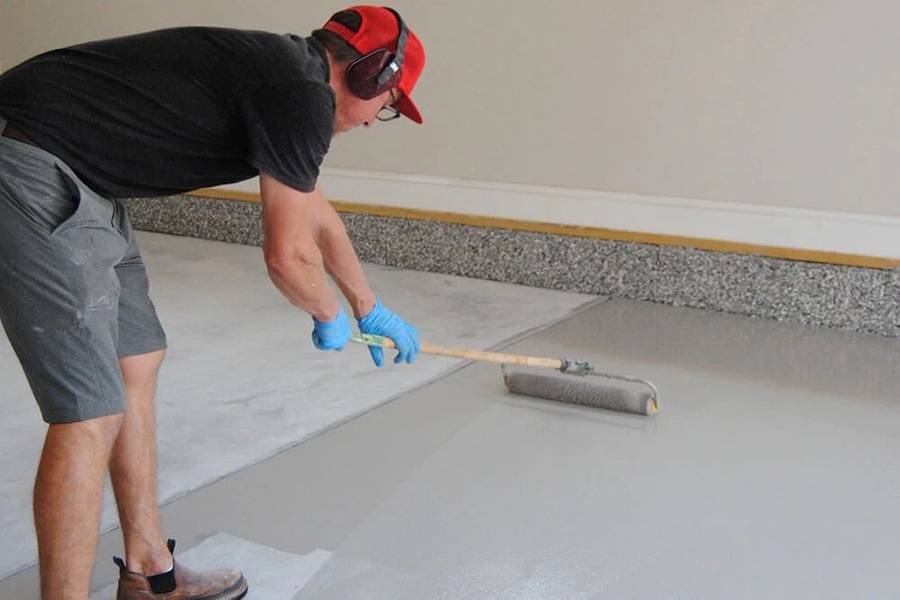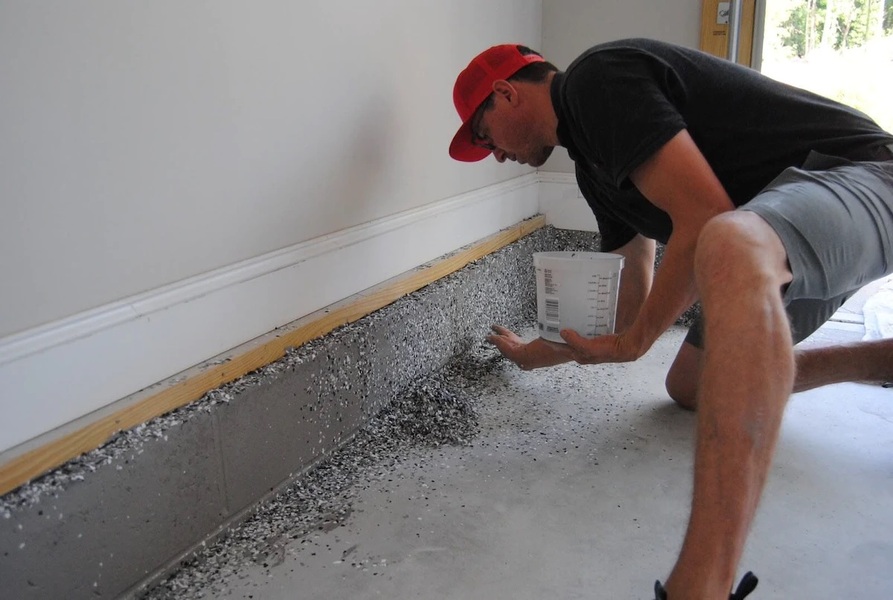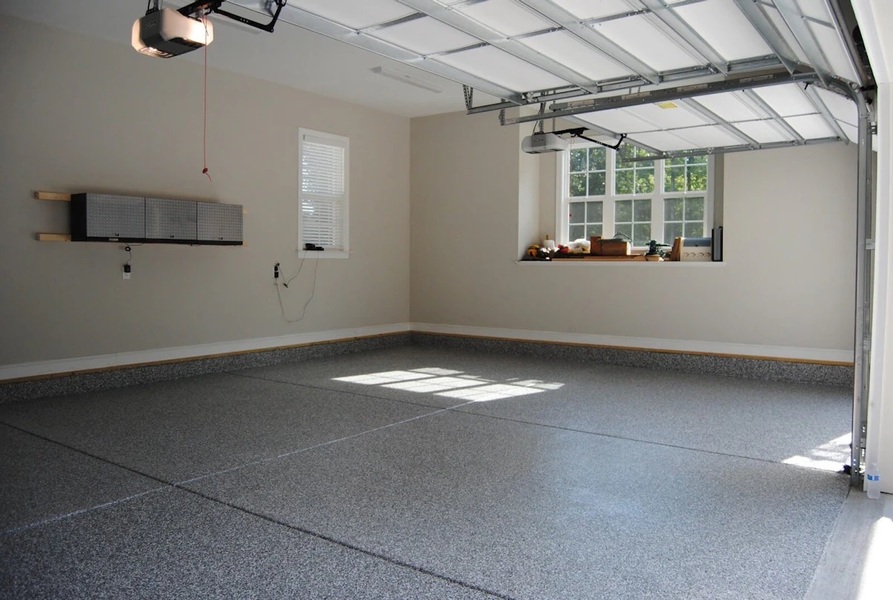Common Problems

4 Common Problems That Epoxy Floor Installers Will Encounter
Professional epoxy installers will run into a handful of problems while they are preparing to install your brand new flooring system. The four most common problems include: Pin Holes, Bubbles, Fish Eyes, Dull finish. We want to inform you about what causes these problems and how professional installers will prevent them from occurring in the first place. Here is everything you need to know:
Common Problem #1: Pinholes That Occur Due To “Out-Gassing”
Out-gassing happens with older concrete flooring systems that are porous (shot-blasting or water-based epoxies can cause holes to increase in size). The holes are usually very small and you often won’t notice them. However, you have several different techniques at your disposal when it comes to preventing pinholes:
Apply the initial epoxy coating later in the day when the temperature drops
Turn off any heat-generating devices nearby
Use a low viscosity primer on the concrete surface
If a large number of pinholes takes form in your epoxy flooring system, then you can solve the issue by scraping, sanding, and recoating your floor. If you only find a few pinholes, then you are better off spot filling them.
Common Problem #2: Bubbles in the Epoxy Coating
When your epoxy floor coating traps air that can’t escape, it will form a bubble in the overlay. This typically happens for several different reasons. The causes include over mixing, over rolling, and higher viscosities. Thicker coatings of epoxy floor mixture are much more likely to contain bubbles and air pockets.
Prevention is fairly simple and straightforward when it comes to air bubbles. Try to avoid over mixing the epoxy material, and apply the squeegee/applicator in both directions. Bubbles are likely to form in the first half-hour after you lay down the coating, and you can pop them while they are happening.
If bubbles do take form in your epoxy floor coating, then there are ways in which you solve the issue. Pop any bubbles that you immediately notice, and then lightly sand down the area and fill it in (be careful not to overfill it). If a large number of bubbles take form in your epoxy coating, then you will need to recoat your floor.
Common Problem #3: Surface Tension
This particular issue occurs when a previous flooring coating becomes contaminated, which is typically due to oil or silicone. The coating will pull away from itself, causing craters to form in your flooring. Surface tension also happens when you neglect to apply a second coating within the proper time frame.
The best way to prevent this issue is by undergoing the necessary prep work and ensuring that your floor is free of any contamination. Also, if you fail to recoat your floor at the right time, then you will need to sand and tack wipe the existing coating. If you notice craters taking form while applying the epoxy coating, then you should continue to back roll.
Common Problem #4: Dull Finishes
Humidity, rain, fog and other various weather elements are usually responsible for this type of issue. Depending on the climate in which you live, solvents may fail to escape from your epoxy floor coating while it cures into place. We advise that you avoid using urethane mixtures if you live in humid conditions. High dew points can also serve as a hindrance to the installation.
Unfortunately, dull finishes don’t have an easy fix. You will need to recoat your entire flooring, which can become incredibly costly and time-consuming.
Schedule an Appointment with a Professional Epoxy Installer
DIY epoxy flooring projects often go awry, especially if you lack the necessary experience and training. Give us a call today and we can help assist you through the entire process. We serve residents living in St. Paul and the surrounding areas. We can also offer you a free estimate for our services.


